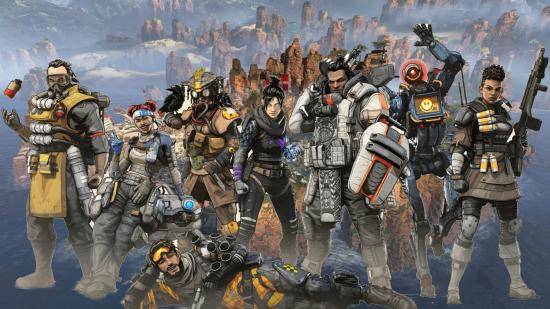Steam is still the most inescapable name in PC game distribution services, but it’s not the only store in town. Even before Epic started scooping up exclusives, EA was keeping its titles on the Origin launcher, and plenty of other publishers declined to give Valve that 30% cut. But now, as Epic’s timed exclusives start to run out and other publishers decide they want access to Steam’s audience, we’re starting to see how those exclusives are faring on Valve’s platform.
Unfortunately, platforms outside of Steam typically don’t feature public player numbers, so we can’t make a direct comparison of their Steam performance against showings on their original platforms. However, we can see how these titles are faring compared with other big games on Steam.
Steam shows how many players are currently in a given game at any specific time, and sites like SteamDB and Steam Charts keep track of those numbers. We can see what a game’s peak concurrent player count looks like on any given day, going back years. The top 25 Steam titles at any given time tend to reach daily peaks anywhere between 30k players and 150k players, with a handful of outliers at the very top-end.
The most notable recent switch is Apex Legends, which hit Steam on November 5. As with the original Origin release, it’s free-to-play, and there’s no barrier to switching platforms since all your progression carries over with you. The Apex Legends Steam player count has hit an early peak of 116,660, which puts it around the success level of venerable Steam titles like Grand Theft Auto V, Rainbow Six Siege, and Destiny 2.
Destiny 2 is another notable example of a game that switched to Steam, and it might just show us the biggest possible numbers for such a switch. After all, Destiny 2 was delisted from its previous platform, Battle.net, and went free-to-play the day it hit Steam, so it’s tough to imagine any other platform-swapping game surpassing its peak player count at launch of 292,513.
The next-biggest Steam debut is Borderlands 3, which hit Steam with 93,820 players six months after its initial launch on Epic. It had the benefit of a 50% discount and a load of hype heading into the Steam release, but it could’ve been bigger. When Borderlands 2 first launched, it reached a player peak of 124,678, and that was in 2012, when Steam player counts were broadly much lower.
Beyond that, a lot of the higher-profile exclusives reached decent, if unspectacular numbers on Steam. Control hit 9,193 players. Metro Exodus reached 15,375. The Outer Worlds achieved 20,349.
The games that have fared best included long-term multiplayer titles like Sea of Thieves, which reached 66,906 players at launch. Hades has also had a ton of success for a smaller-scale indie game, with 37,749, but that number was achieved after its 1.0 launch, when it had already spent several months in Steam Early Access. Similarly, Satisfactory put up an early peak of 27,439, but I suspect that number will get much higher with 1.0.
Unfortunately, platforms outside of Steam typically don’t feature public player numbers, so we can’t make a direct comparison of their Steam performance against showings on their original platforms. However, Satisfactory sales do give us one point of comparison, though not a perfect one. The devs reported that the game sold 500,000 copies in its first three months on Epic, and 367,000 in its first month on Steam.
There are some bizarre side notes to all this, too, like Rocket League, which was removed from sale on Steam back in September, becoming free-to-play exclusively on the Epic Store. Rocket League’s Steam player count hit a new record of 147,632 anyway, thanks to existing owners jumping back in to see what the hype was about.
We’re about to see more titles jump to Steam in the months ahead, from adventure games like Shenmue III to strategy games like Phoenix Point. There is one big advantage of waiting for a Steam release, at least – you’re getting at least a year’s worth of bug fixes, DLC, and discounts for your patience.
